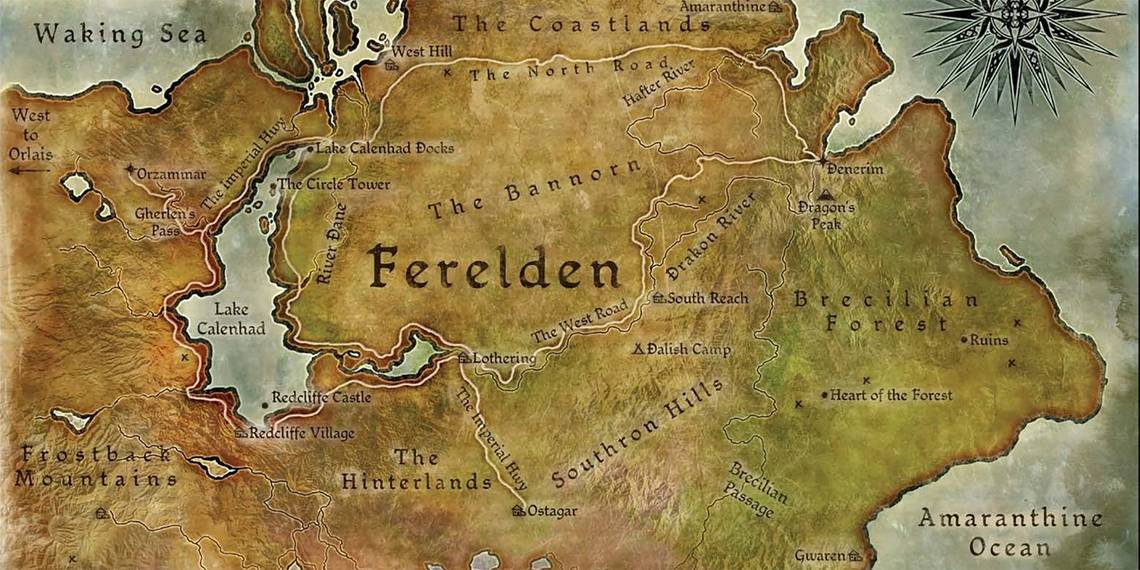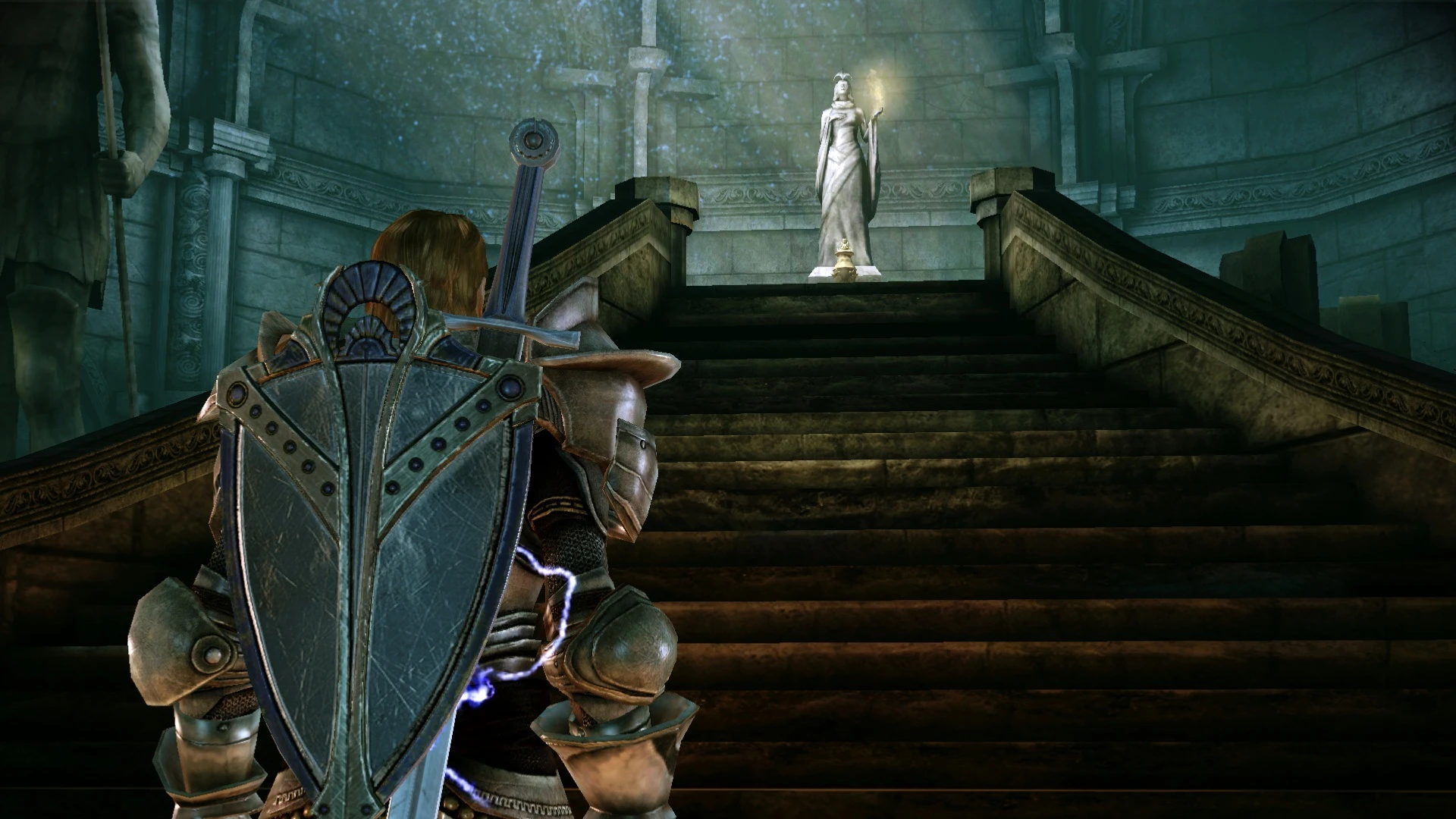Dragon Age: Origins is a single-player, high fantasy RPG developed and released by Bioware in 2009. The entire Dragon Age series, in which there are now four games, is made up of complex roleplaying and worldbuilding, dark-ish fantasy and horror elements, and charmingly cringy silliness, all wrapped up in a clearly medieval Europe-inspired aesthetic, rich with castles, chevaliers and templars, lady priests and mystics, political intrigue, Middle English romance-like hero's journeys, and, yes, the occasional dragon.
The player takes on the role of a customizable character called "the Warden" whose job is to save Ferelden--essentially, fantasy Britain, a kingdom run by English-accented noblemen committing Macbeth-esque acts of betrayal and stewing in ages-old rivalries with fantasy France--from the Blight. The Blight is, explained simply, the consequences of the Dragon Age equivalent of the Fall of Man in the form of zombie hordes. When I say "the Dragon Age equivalent of the Fall of Man," I mean that the event that began the Blight long ago is rather similar thematically to the story of Adam and Eve eating from the Tree of Knowledge. Thedas, the world in which Dragon Age takes place, is ruled by a religion that is, for all intents and purposes, fantasy Catholicism, much like the way real-life medieval Europe was entirely under the control of the Church (which, in Dragon Age, is called the Chantry).
The medievalism of Origins and the series as a whole is a foundational facet of the games, and I could probably make several blog posts discussing it all, but to narrow down a very lore-heavy, several-game-long experience into one brief-ish post, I'll be focusing in on one game--Origins--and one particular quest within it that relates to the topic of my Medieval World blog post: holy relics.
The Urn of Sacred Ashes
"The Urn of Sacred Ashes" is a main quest wherein the Warden and their companions go searching for the titular Urn, a relic which, according to legend, contains the ashes of the prophet Andraste. Andraste is basically Thedas' Jesus if Jesus was more of a Joan of Arc/Virgin Mary figure, being the Bride of the Maker rather than the Son of God. Much like Joan of Arc and other female mystics of the medieval period, Andraste claimed to receive visions from God/the Maker; her visions then became the foundation of Andrastianism, and she was eventually betrayed by her mortal husband (Joseph and Judas rolled up into one) and burned at the stake by the Tevinter Imperium (the Roman Empire if it never fell and all the senators were mages).
The same way that in medieval Europe, relics from the Crucifixion and from the bodies/belongings of Catholic religious figures were revered and sought-after, remnants of Andraste's life and death are considered important to Andrastians in Thedas. Upon stopping by a local Chantry along their travels, the Warden meets a templar knight who gives them a quest to go searching for, naturally, the most coveted relic of all: the supposed remains of Andraste's body. There's been a renewed fervor in the search for Andraste's ashes by the time the Warden hears of it, since the Arl of a major Fereldan city has fallen to a mysterious illness and requires miraculous healing, which legend claims that Andraste's ashes can provide. As I discussed in my first blog post, this same sort of belief existed about relics of real-life holy figures: that, by coming into contact with the belongings or body parts of holy figures, one could be healed.
The questline leads the Warden to the remote village of Haven, the location of the Urn that is guarded by cultists. After quite a lot of fighting with the hostile cultists and slaying the cultists' pet dragon, the Warden unlocks a new quest: "A Test of Faith," wherein, guided by a spirit named the Guardian Knight, they and their companions go through a sort of sifting of their souls called The Gauntlet to determine their worthiness to obtain a pinch of Andraste's ashes. Tests of characters as parts of quests are rather common in Middle English romances, which might have been the idea that the writers of Origins pulled from for this quest (and which makes the search for the Urn sort of Grail Quest-like, but that's a discussion for a different prompt). What all is said and done, the Warden is judged worthy, the Arl is healed by the ashes, and in the third game of the series, Dragon Age: Inquisition (2014), Haven becomes a popular site for Andrastian pilgrimages, a practice that was also common during the Middle Ages at sites of holy relics.



2.png/revision/latest?cb=20150130150054)



Your dive into the lore and setting of the game series was really fun to learn about. I enjoyed how you tied the game's details to real life religious beliefs and stories. Plus, the call back to your previous post was a nice add on. I'll have to do some lore diving into this game series on my own now that I know something about it.
ReplyDelete